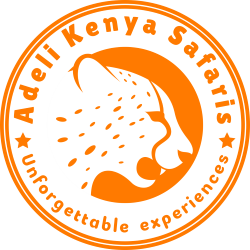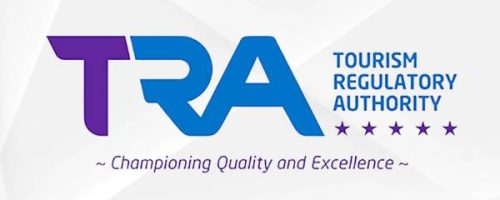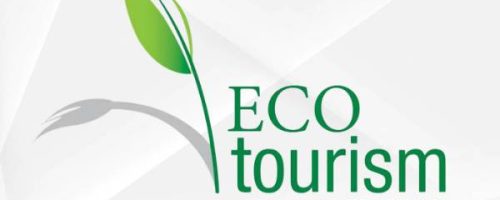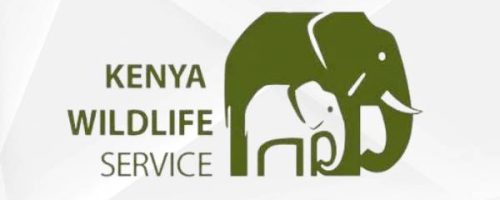| Name of the facility | Amboseli Sopa Lodge |
|---|---|
| Certification Achieved | Bronze |
| Year opened | 2003 |
| Tourism region | Tsavo/Amboseli |
| County | Kajiado |
| Address | Kimana Tikondo Group Ranch Map It |
| Telephone/Mobile | +254-20-3616000/+254-20-3750235 |
| [email protected] | |
| Website | sopalodges.com |
| Facility Notes | Amboseli Sopa Lodge is located on a private land in the former Kimana Tikondo Group Ranch, approximately 20 kilometers from the Amboseli National Park – Kimana Gate. The camp is specifically located on Global Positioning System (GPS) Coordinates, Latitude: 02’ 47’ South and Longitude37’ 9’East. It has 83 guest tents with a bed capacity of 166 visitors and a total work force of 98 employees. The Amboseli ecosystem has overtime faced various challenges which resulted to land zoning. The land zoning is aimed to separate conflicting land uses while at the same time providing conducive environment for investment in other land use options that are socially and economically acceptable to land users. Zoning is further divided into two; Land use zones that include: arable land, tourism zones, and wildlife and livestock production zones. Amboseli Sopa lies within the tourism zone whereas the Amboseli National Park lies within the wildlife zone. The park is part of the larger Amboseli ecosystem that straddles across the Kenya-Tanzania border. It was gazetted as a National Park in 1974 in order to protect the core of the ecosystem. Amboseli ecosystem is home to a variety of wildlife and famous for elephant watching. Other common wildlife includes: Cape buffalo, impala, lion, cheetah, hyena, giraffe, zebra, and wildebeest among others some of which can be seen from the Lodge. The ecosystem is also a haven for birdlife with over 400 species recorded. Other attractions include opportunities to interact with the local Maasai community and the spectacular views of Mount Kilimanjaro, the highest mountain in Africa. |
| Energy management | The Lodge has diesel run generators as the main source of energy. The facility has three (3) generators with power output of 250 KvA, 150 KvA, and 80KvA. Power is used for lighting, water heating and running the lodge refrigerants. The generators are rationed at lease for 10 hours daily. Low power output generator is run at low occupancy. Generator fuel consumption is documented on daily basis to monitor usage. Energy saving bulbs are installed throughout the lodge for energy efficiency. In addition, the facility makes use of key cards as main switches in the guest cottages. Liquefied petroleum gas (LPG) is used for cooking at the guest kitchen. The guests’ camp fire area is well designed to reduce fuel wood consumption. Guests are briefed on energy conservation upon arrival and through room information folders whereas employees are sensitized during meetings. |
| Environmental management | The lodge is guided by the corporate philosophy on environment which states commitment to minimizing environmental impact, promotion of health and safety of staff and guests, and integrating all social and environmental concerns in their business operations. The lodge has an environmental committee consisting of twelve (12) members to spearhead environmental conservation and management issues within the lodge. The lodge undertakes its annual self-Environmental Audit (EA) as required by EMCA 1999 (Environmental Management and Co-ordination Act). |
| Chemical use | The facility uses Robico Chemicals for its laundry and Henkel Limited used at the swimming pool. Material Safety Data Sheets (MSDS) for the chemicals are available. Swimming pool chemicals consumption records are properly kept to monitor chemical use. The facility uses biodegradable Clique Limited soaps and solutions at guest bathrooms. Fuel (Diesel) is stored in approximately 49 tanks of 200 litres. Gas is bought in a 1 tonne cylinder. The storage area is well secured and safety signage mounted |
| Conservation Criteria | |
| Community Criteria | |
| Solid waste management | Waste is separated at source and the bins are clearly labeled. Organic waste is given off to local pig farmers on a weekly basis. Organic waste is given off to local pig farmers on a weekly basis. Waste such as plastics, metals and glass is separated and put in a storage area. Medical waste such as sharps is disposed for incineration through the local Kimana District Hospital |
| Water management | The main source of water for Amboseli Sopa is a borehole located within the premises. The water is pumped and stored in reservoirs with a capacity of 30,000 litres. It flows via gravity to the entire premises. The tank is fixed with a float switch to contain overflow spillage. The water is metered at source i.e. in-let meter to measure amount of water pumped into the tanks. Water consumption monitoring is done through recording on daily basis. Visitors are sensitized on water conservation through room “towel cards” encouraging guests on the re-use of towels. Laundry machines are operated at optimum to conserve on water and enhance energy efficiency. Guest room showers are fixed with low filter shower heads to minimize water usage. The Lodge has a water extraction permit. |
| Visitor communication & education | Visitors are briefed upon arrival on the lodge’s operations and environmental values. The guest cottages are equipped with room information sheets to brief the visitors on environmental conservation and operations |
| Pollution | The guest kitchen is fixed with a kitchen hood for proper ventilation. The pathways are mildly lit at night and covered to reduce light pollution |
| Environmental conservation | Visitors are encouraged to participate in low impact activities such as bird watching and nature walks. The Lodge conducts an environmental day on a weekly basis; the day entails, litter collection and tree planting activities. In the last one year, at least 50 tree seedlings have been planted with a 95% success rate. The lodge’s architectural design blends in with the natural surroundings. Its design is inspired by the local Maasai Manyatta designs. Amboseli Sopa supports Big Life Foundation in their conservation initiatives. The support in mainly logistical and it includes provision of water to run their camps. The lodge rangers also assist in wildlife monitoring. The facility is an active participant in KWS stakeholder meetings on the park and wildlife management. |
| Waste water management | The facility swimming pool is cleaned via sieving, and vacuum cleaning. Backwash is conducted every 2- 3 days. Effluent from the guest kitchen flows through a grease trap before draining into the septic tanks. The grease trap is cleaned twice a week. Grey water effluent from the guest tents and staff quarters is managed through septic tanks. Black water for the facility is managed through septic tanks. Bio-enzymes are used in the septic system to digest the sludge. Effluent sample tests are conducted at the lodge in compliance with Environmental Management and Coordination (Water Quality) Regulations 2006 and the lodge has an effluent discharge license obtained |
| Purchasing and supplies | The lodge purchases its vegetables and fruits packed in reusable crates and cartons. Rice, sugar, flour are bought in bulk to reduce on waste. The supply of dry goods is done on monthly basis. |
| Employment and remuneration/staff welfare | Employees are registered under KUDHEIHA workers union. The facility has a works committee that spearheads staff welfare issues |
| Staff education, communication and awareness training | Staff is sensitized and briefed during departmental/daily briefing meetings. The lodge has notice boards for staff communication |
| Cultural preservation and promotion/protection of local sites | Cultural integration is done through active involvement by visitors through the following; • Offering cultural lectures • Conducting of regular Masai dances which are done depending on guest occupancy • Visits to a local village for a cultural experience depending on clients’ interest. • Facility design which represents Masai manyatta. Also, décor artifacts are availed throughout the facility e.g. arrows and spears |
| Benefits to local community/community empowerment | The facility provides employment opportunities to the locals; approximately 60% of permanent employees are hired from the local community. Additional casuals are hired from the local community. The lodge houses ‘Interactions and Solitary’ – a local NGO spearheading community and cultural development in the area. The facility has designated an office for the organization. Amboseli Sopa has a community wellbeing program. Some of the initiatives and projects the lodge has undertaken include; • Maintaining the community water spring and providing water to them as there is a designated water tank at the lodge which is accessible to the local community. • Paying the salary of one (1) school teacher every month in the local Ol Donyo Oibor primary school (KSh. 18,000). Additionally, the lodge has established a tree nursery for the school. • Paying bed night fees and submits land rate to Kajiado County on monthly basis. • Supporting Teule children’s home in Loitoktok through donations on food supplies, clothes, shoes, linen and sports equipment • Providing logistical support to the local Ol Donyo Oibor dispensary • The lodge has designated a space within the lodge for a group of 30 women who sell their wares (beadwork and other Masai crafts) on a daily basis. This empowers the local women financially. The women run the management of the shop. The lodge pays their license to the County government (KSH. 12,000) and maintenance of the market. • Staff benefits include; food, uniform, transport and accommodation |
| Cultural Criteria | |
| Health and safety | The Lodge is guided by the corporate Health and Safety Statement which states commitment to compliance with legal regulations and promotion of health and safety practices in business operations. There is a designated health and safety committee comprised of 20 employees. The committee meets on a quarterly basis. An incident register is also available. First aid kits are distributed in the main departments and a trained team of first aiders is also available, a team of 30 staff members have been trained on fire-fighting skills. The facility has a clinic and clinical officer to cater for staff and guests medical care. Emergencies are referred to Kimana or Loitoktok hospital. Medical checkups are conducted every six months for all kitchen staff (food and beverage handlers) in the facility to ascertain their health fitness, and in compliance with the Food, Drugs, and Chemical substances Act. Cap 254. The lodge is linked to Flying doctors emergency services and it has conducted a health and safety audit in compliance with Occupational Safety and Health Act, 2007. Guest rooms at the facility are fixed with smoke detectors and fire alarms. An emergency response plan is fixed behind the guest rooms’ door.Firefighting equipment such as fire extinguishers and fire blanket in the kitchen are strategically fixed and serviced. Staff is issued with Personal Protective Equipment (PPE) such as boots and gloves. A fire assembly point is clearly marked within the facility. Precautionary and safety signage such as ‘no smoking’, ‘highly flammable’, and ‘hatari’ are available at the gas storage section. |
| Child labor, abuse and human rights | The facility does not employ any person below the legal working age of 18 years. |
| Business Practises Criteria | |
| Entry Date | 13th March 2018 |













